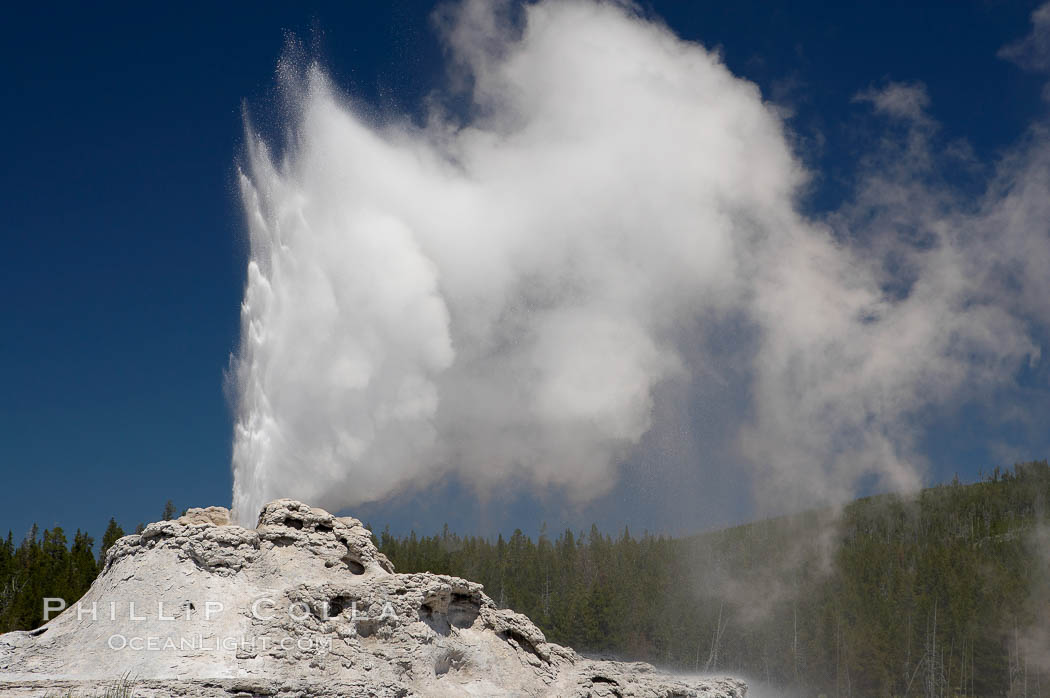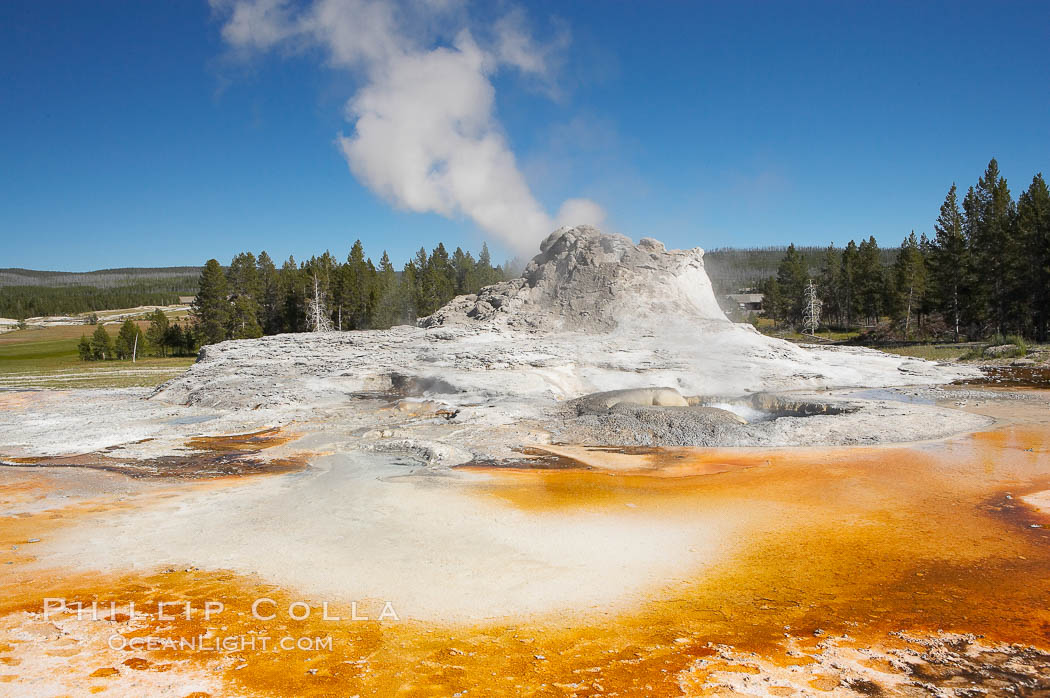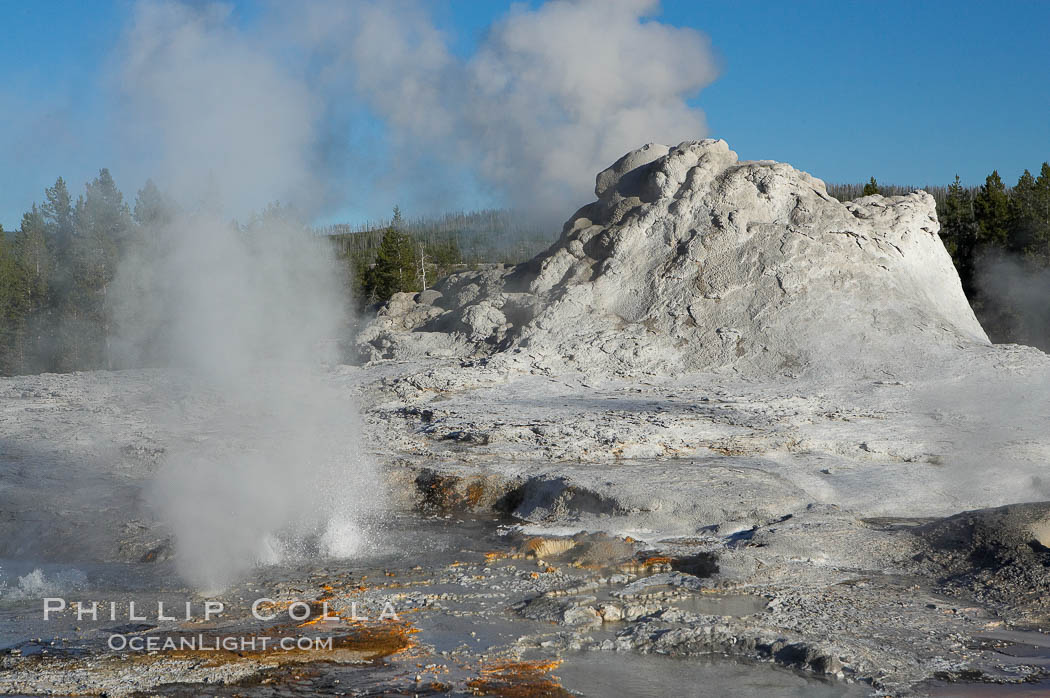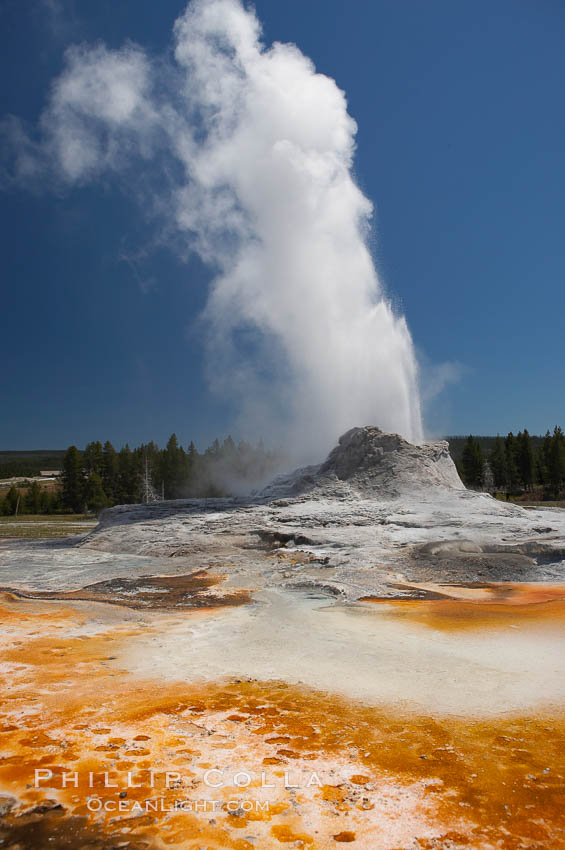Road Trip: Day 4
Castle Geyser is, after Old Faithful Geyser, perhaps the most-viewed of the large predictable geysers in Yellowstone National Park. Castle Geyser is a short, easy walk from the Old Faithful Inn, and is well predicted with intervals of about 10 hours. Since Castle Geyser stands in a large clearing in the Upper Geyser Basin, its eruptions are easily seen from the entire area. Castle Geyser’s eruption a lengthy water phase — 20 minutes is typical — followed by an additional 40 minutes or so of steam, so when it erupts a crowd has time to gather to admire its tall blow, up to 90′ high. Castle Geyser’s 12′ tall cone suggests that it is 5,000 to 15,000 years old. However, it sits on top of an even older and more massive sinter base formed by an earlier spring. Tortoise Shell Spring lies to one side of Castle Geyser covering the base with a beautiful pearly, orange-yellow color.
Castle Geyser erupts, reaching 60 to 90 feet in height and lasting 20 minutes. While Castle Geyser has a 12 foot sinter cone that took 5,000 to 15,000 years to form, it is in fact situated atop geyserite terraces that themselves may have taken 200,000 years to form, making it likely the oldest active geyser in the park. Upper Geyser Basin.
Image ID: 13417
Location: Upper Geyser Basin, Yellowstone National Park, Wyoming, USA
Castle Geyser (during steam phase, not eruption) with the colorful bacteria mats of Tortoise Shell Spring in the foreground. While Castle Geyser has a 12 foot sinter cone that took 5,000 to 15,000 years to form, it is in fact situated atop geyserite terraces that themselves may have taken 200,000 years to form, making it likely the oldest active geyser in the park. Upper Geyser Basin.
Image ID: 13427
Location: Upper Geyser Basin, Yellowstone National Park, Wyoming, USA
Tortoise Shell Spring bubbles in front of the sinter cone of Castle Geyser. Upper Geyser Basin.
Image ID: 13430
Location: Upper Geyser Basin, Yellowstone National Park, Wyoming, USA
Castle Geyser erupts with the colorful bacteria mats of Tortoise Shell Spring in the foreground. Castle Geyser reaches 60 to 90 feet in height and lasts 20 minutes. While Castle Geyser has a 12 foot sinter cone that took 5,000 to 15,000 years to form, it is in fact situated atop geyserite terraces that themselves may have taken 200,000 years to form, making it likely the oldest active geyser in the park. Upper Geyser Basin.
Image ID: 13437
Location: Upper Geyser Basin, Yellowstone National Park, Wyoming, USA
Keywords: castle geyser, tortoise shell spring, yellowstone national park.







